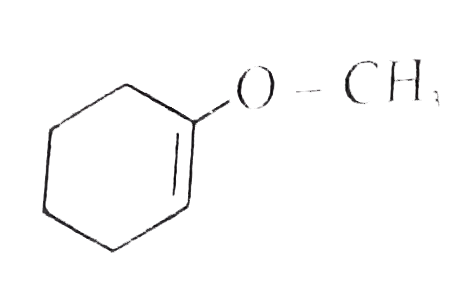Preparation of alcohols from alkenes involves the electrophilic attack on alkene carbon atom. Explain its mechanism.
To explain the mechanism of preparing alcohols from alkenes through electrophilic attack, we can break it down into several steps:
Step 1: Formation of the Electrophile
In this reaction, we start with an alkene, which contains a double bond (C=C). The double bond consists of a sigma (σ) bond and a pi (π) bond. The π bond is rich in electrons and can act as a nucleophile. When we introduce an electrophile, such as H⁺ (proton), it will attack the electron-rich π bond of the alkene.
Hint: Identify the electrophile and the nucleophile in the reaction.
Step 2: Electrophilic Attack
The π electrons of the alkene attack the H⁺ ion, leading to the formation of a carbocation. The location of the carbocation depends on the stability of the resulting carbocation (more substituted carbocations are more stable). For example, if we have propene (CH₂=CH-CH₃), the H⁺ can add to either end of the double bond, forming either a primary or secondary carbocation.
Hint: Consider the stability of different carbocation intermediates when predicting the product.
Step 3: Formation of the Alcohol
Once the carbocation is formed, it is highly reactive. Water (H₂O), which acts as a nucleophile, can attack the carbocation. The lone pair of electrons on the oxygen atom of water will bond with the positively charged carbon atom of the carbocation, forming an oxonium ion (R-CH(OH)₂⁺).
Hint: Look for the role of water in this step and how it interacts with the carbocation.
Step 4: Deprotonation
The oxonium ion (R-CH(OH)₂⁺) is not a stable species. To stabilize it, one of the hydrogen atoms attached to the oxygen will be lost as a proton (H⁺), resulting in the formation of the alcohol (R-CH(OH) + H⁺). This final product is the alcohol derived from the original alkene.
Hint: Remember that the loss of a proton is crucial for forming the final alcohol product.
Summary of the Mechanism
1. Electrophile Formation: H⁺ acts as an electrophile.
2. Electrophilic Attack: Alkene π electrons attack H⁺, forming a carbocation.
3. Nucleophilic Attack: Water attacks the carbocation, forming an oxonium ion.
4. Deprotonation: The oxonium ion loses a proton to yield the alcohol.
Final Product
The final product of this mechanism is an alcohol, which could be primary, secondary, or tertiary depending on the structure of the original alkene and the stability of the carbocation formed during the reaction.
In this reaction, we start with an alkene, which contains a double bond (C=C). The double bond consists of a sigma (σ) bond and a pi (π) bond. The π bond is rich in electrons and can act as a nucleophile. When we introduce an electrophile, such as H⁺ (proton), it will attack the electron-rich π bond of the alkene.
The π electrons of the alkene attack the H⁺ ion, leading to the formation of a carbocation. The location of the carbocation depends on the stability of the resulting carbocation (more substituted carbocations are more stable). For example, if we have propene (CH₂=CH-CH₃), the H⁺ can add to either end of the double bond, forming either a primary or secondary carbocation.
Once the carbocation is formed, it is highly reactive. Water (H₂O), which acts as a nucleophile, can attack the carbocation. The lone pair of electrons on the oxygen atom of water will bond with the positively charged carbon atom of the carbocation, forming an oxonium ion (R-CH(OH)₂⁺).
The oxonium ion (R-CH(OH)₂⁺) is not a stable species. To stabilize it, one of the hydrogen atoms attached to the oxygen will be lost as a proton (H⁺), resulting in the formation of the alcohol (R-CH(OH) + H⁺). This final product is the alcohol derived from the original alkene.
1. Electrophile Formation: H⁺ acts as an electrophile.
2. Electrophilic Attack: Alkene π electrons attack H⁺, forming a carbocation.
3. Nucleophilic Attack: Water attacks the carbocation, forming an oxonium ion.
4. Deprotonation: The oxonium ion loses a proton to yield the alcohol.
The final product of this mechanism is an alcohol, which could be primary, secondary, or tertiary depending on the structure of the original alkene and the stability of the carbocation formed during the reaction.
Topper's Solved these Questions
Similar Questions
Alkenes undergo electrophilic addition reactions. Electrophilic addition to unsymmetrical alkenes involve the formation of a more stable carbocation intermediate in the first step which is rate determining and carbocation is then attacked by a nuclephile to form product
Which one of the following alkene reacts most readily with HCI?
View SolutionAlkenes undergo electrophilic addition reactions. Electrophilic addition to unsymmetrical alkenes involve the formation of a more stable carbocation intermediate in the first step which is rate determining and carbocation is then attacked by a nuclephile to form product
 +H2OH2SO4−−−→ Product
+H2OH2SO4−−−→ Product
View Solution
Knowledge Check
The isomeric alcohol which has a chiral carbon atom is:
An-butyl alcoholBiso-butyl alcoholCsec-butyl alcoholDtert-butyl alcoholWhich of the following alkenes is most reactive towards electrophilic addition reaction?
AH2C=CH2BCH3−CH=CH2C DH2C=CH−Cl
DH2C=CH−Cl
Alkenes
 and carbonyl compounds
and carbonyl compounds  both contain a π bond but alkenes show electrophilic addition reactions whereas carbonyl compounds show nucleophilic addition reactions. Explain.
both contain a π bond but alkenes show electrophilic addition reactions whereas carbonyl compounds show nucleophilic addition reactions. Explain.
View SolutionThe treatment of alkyl chlorides with aqueous KOH leads to the formation of alcohols but in the presence of alcoholic KOH, alkenes are major products. Explain.
View SolutionAlkenes undergo electrophilic addition reactions. Electrophilic addition to unsymmetrical alkenes involve the formation of a more stable carbocation intermediate in the first step which is rate determining and carbocation is then attacked by a nuclephile to form product
HO−CH2−CH2−CH2−CH=CH2I2−−−−−→NaHCO3 major product formed is
View SolutionSymmetrically subsituted epoxides give the same products in both the acid catalysed and base catalyzed ring opening. An unsymmetrical epoxide gives different products under acid catalysed and base catalysed conditions. Under basic contions, the alkoxide ion simply attacks the less hindered carbon atom in an SN2 displacement. Under acidic conditions, the alcohol, attacks the protonated epoxide.
_S01_402_Q01.png)
Structure II and III show that the oxtrane carbon share part of positive charge. The tertiary carbon bear a larger part of positive charge and it is more strongly electrophilic. The bond between teritiary carbon and oxygen is weaker implying a lower transition state energy for attack at the teritary carbon. Attack by the weak nucleophilic is sensitive to the strength of electrophilic is sensitive to the strength of electrophile. Center attack takes place at more electrophilic carbon which is usually the more substituted carbon because it can better support the positive charge.
What will be the products in following reactions
_S01_402_Q02.png)
View SolutionSymmetrically subsituted epoxides give the same products in both the acid catalysed and base catalyzed ring opening. An unsymmetrical epoxide gives different products under acid catalysed and base catalysed conditions. Under basic contions, the alkoxide ion simply attacks the less hindered carbon atom in an SN2 displacement. Under acidic conditions, the alcohol, attacks the protonated epoxide.
_S01_403_Q01.png)
Structure II and III show that the oxtrane carbon share part of positive charge. The tertiary carbon bear a larger part of positive charge and it is more strongly electrophilic. The bond between teritiary carbon and oxygen is weaker implying a lower transition state energy for attack at the teritary carbon. Attack by the weak nucleophilic is sensitive to the strength of electrophilic is sensitive to the strength of electrophile. Center attack takes place at more electrophilic carbon which is usually the more substituted carbon because it can better support the positive charge.
_S01_403_Q02.png)
View SolutionSymmetrically subsituted epoxides give the same products in both the acid catalysed and base catalyzed ring opening. An unsymmetrical epoxide gives different products under acid catalysed and base catalysed conditions. Under basic contions, the alkoxide ion simply attacks the less hindered carbon atom in an SN2 displacement. Under acidic conditions, the alcohol, attacks the protonated epoxide.
_S01_404_Q01.png)
Structure II and III show that the oxtrane carbon share part of positive charge. The tertiary carbon bear a larger part of positive charge and it is more strongly electrophilic. The bond between teritiary carbon and oxygen is weaker implying a lower transition state energy for attack at the teritary carbon. Attack by the weak nucleophilic is sensitive to the strength of electrophilic is sensitive to the strength of electrophile. Center attack takes place at more electrophilic carbon which is usually the more substituted carbon because it can better support the positive charge.
_S01_404_Q02.png)
View Solution